Explosive ordnance, such as mines, pose a significant threat to naval operations, offshore energy projects, and other maritime activities. Traditional methods of disposing of these hazards often put personnel and equipment at risk as they require divers or remotely operated vehicles (ROVs) to approach the ordnance closely and manually initiate the detonation process.
The Initiation Transponder 6 (IT 6) from our technology partner Sonardyne, when integrated with mine neutralisation devices mounted on a VideoRay Mission Specialist Defender underwater robot, provides a remote, autonomous, safe and effective solution for mine clearance operations. This technical collaboration allows for acoustic initiation and detonation from a remote location, eliminating the need for and risks associated with physical proximity to the ordnance.
The integration of the Defender and mine neutralisation devices with the IT 6 represents a significant advancement in the field of explosive ordnance disposal (EOD).
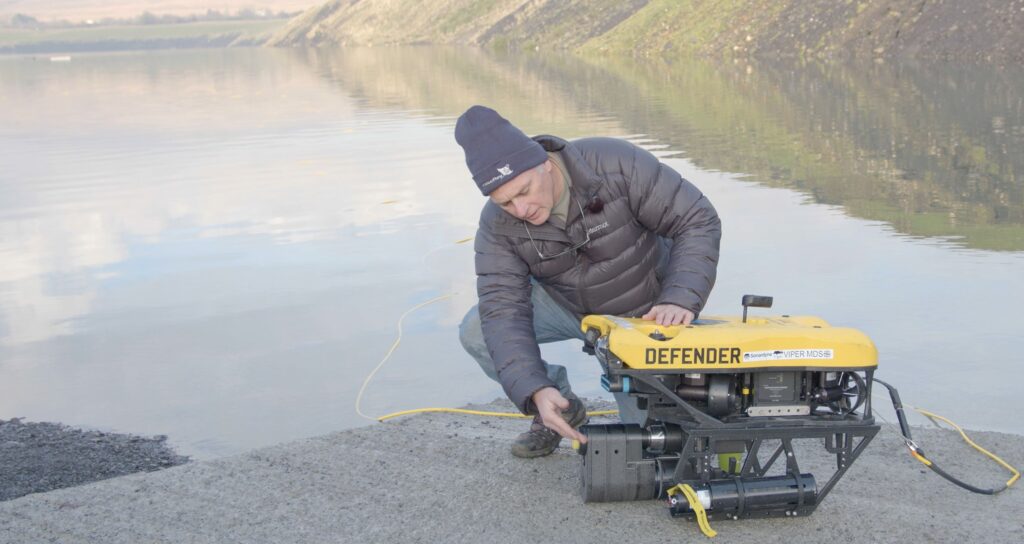
How it works:
- The IT 6 is connected to a non-electric mine neutralisation device, which is deployed near the contact by the Defender.
- Once the neutralisation device is in place, the Defender can be manoeuvred to a safe distance, typically around 1 kilometre away.
- Using Sonardyne’s Wideband 2 digital signal technology, the IT 6 receives an acoustic command to arm the charge from a surface vessel or command centre. A subsequent command then initiates the shock tube and detonates the neutralisation device.
- The entire process can be carried out in most weather conditions and during day or night, enhancing operational flexibility and safety.
Benefits:
- Enhanced safety: By eliminating the need for physical proximity to the contact during detonation, the combination of the IT 6 and Defender significantly reduces the risk to personnel and assets.
- Increased operational efficiency: The autonomous delivery and wireless initiation capability streamlines the process, allowing for faster and more efficient mine clearance operations.
- Versatility: The IT 6 and Defender can be used in various underwater environments, including deep-water operations, making it suitable for a wide range of clearance missions. The underwater robot is designed for more precise control of the vehicle position and orientation, heavier payloads and demanding interventions. With seven thrusters, it can move in any direction and maintain active pitch to face its target in an upward or downward orientation.
- Proven technology: Sonardyne’s Wideband 2 digital signal technology draws on a fifty-year heritage; it is field-proven, ensuring reliable and long-range underwater wireless communication. The Defender draws on VideoRay’s twenty-five years of ROV design experience and is built with power, reliability and flexibility in mind.
- Multi-shot: the IT 6 can be fired multiple times, making deck tests and practice runs affordable. In addition, if a mission is aborted the kit can be safely recovered and reused. The explosive charge and the IT 6 are only sacrificed on confirmed contacts.
- Cost: Once the initial investment has been made for the technology, the cost per deployment is significantly lower than sending personnel on each mission. If multiple ROVs are deployed, they can be controlled from one vessel or control room, thus further reducing costs.
Demonstration
In 2022, the IT 6 and the Defender were demonstrated together for the first time to the UK’s Defence Science and Technology Laboratory (DSTL) and the UAE Navy at a quarry in Wales.
The demonstration included successful detonations of a mine neutralisation device, delivered by the Defender and initiated by the IT 6, from a range of approximately 1 kilometre.
As armed forces around the world move towards more autonomous operations on land, in the air and under the sea, there will be increased demand for the utilisation of existing and the development of new technology.
The benefits in terms of safety, efficiency, adaptability and cost are obvious, not just in mine countermeasures; and the collaboration between market leaders, such as Forcys, Sonardyne and VideoRay, will be at the forefront of driving advances in the technology. Contact us to see how we can help you be there too.
_______________________________
Did you know that another of our technology partners, Voyis, manufacture the market’s technically leading ROV piloting camera? The Discovery camera from Voyis enhances your identification by delivering crisp 4K images of your targets in real-time. The ideal complement to the IT 6 and Defender. Find out more in a blog coming soon…
Discovery is a revolutionary new underwater camera system from Forcys technology partner Voyis that is changing the way we understand the underwater domain. In an interview with Luke Richardson VP for Sales and Marketing at Voyis, we discuss the origins of the Discovery, the challenges faced in its development, and the new optical payloads that are helping to transform our understanding of the underwater world.
Discovery was designed to remove the compromise between piloting and inspection cameras. Traditional underwater robotic systems (ROVs) have separate camera systems for piloting and inspection. Piloting cameras are designed with low latency in mind, which compromises the video and data quality of the camera to ensure the pilot has rapid response time. Whereas, inspection cameras provide high quality optical video and imagery, but are not trusted to provide low latency piloting capabilities, limiting the payload capacity for ROVs, particularly smaller platforms. Discovery Vision Systems consolidate these two functions into a single camera system. This gives operators access to high-quality imaging, low latency video feed, and, in the case of the Stereo variant, real-time depth perception, all from a single camera.
Luke Richardson explains, “New optical payloads are providing us with unprecedented insights into the underwater domain. The Discovery’s camera system, for example, uses a mix of high-quality optics and focus, combined with image enhancements done at the edge to generate actionable subsea datasets in real-time. This allows operators to see and understand the underwater world in a new way. It hasn’t been easy. One of the biggest challenges was developing a camera system that could meet the requirements for an effective subsea navigation and inspection tool, while fitting on a small inspection-class ROVs. Discovery Vision Systems are powered with the latest developments in computing capability to minimize the electronic stack, while still performing advanced corrections essential to deliver a superior inspection camera. In addition to optimizing the electronics to get the most out of the camera internals, the system also utilizes a 130° x 130° domed lens with full 4K resolution and crisp focus to provide platforms with increased situational awareness through piloting operations. Integrating this incredible field of view within the Discovery size limitations required mastery from Voyis’ design team. The development of the Discovery tackled the challenges and as a result the quality and capability of the system met the need of our objective, helping humans see the depths like we see the surface.”
In defence applications cameras have a critical role to play in providing improved situational awareness by helping to identify IEDs and mines, supporting autonomous manipulation tasks and obstacle avoidance.
Advanced optical and processing technology readily accessible
Discovery Vision Systems from Voyis use the Data Distribution Service (DDS) architecture to provide users with access to all the data they need to make informed decisions and perform inspections. DDS is a standard protocol that allows different systems to communicate with each other and share data in a real-time and efficient manner.
“You’d like to know why we would want to use DDS? It means we can provide the user with a number of outputs:
- Piloting feed: A live stills-to-video feed that is compressed for low latency.
- Raw image data set: A set of unprocessed images that can be used for further data refinement or inputs to customer proprietary enhancements.
- Processed image data set: A set of images that have been light levelled, undistorted, and colour corrected, optimal inputs for automatic target recognition software.
- Inspection video: A stills-to-video feed to re-live the survey to uncover more details after mission.
- 3D point cloud depth map (Stereo camera): 3D depth perception, mapping the environment to support autonomous manipulation, visual station keeping or docking, and tracking.
Users can simply subscribe to any of these data streams and receive them in real time. This allows users to create 3D models, make decisions, and perform inspections quickly and efficiently.”
Discovery Vision Systems are compliant with the Unmanned Maritime Autonomy Architecture (UMAA) framework, which is used by the US Navy. This means that the system can be easily integrated with other systems that use the UMAA framework. This makes it easy for users to deploy the Discovery Vision System on their own platforms and start using it immediately.
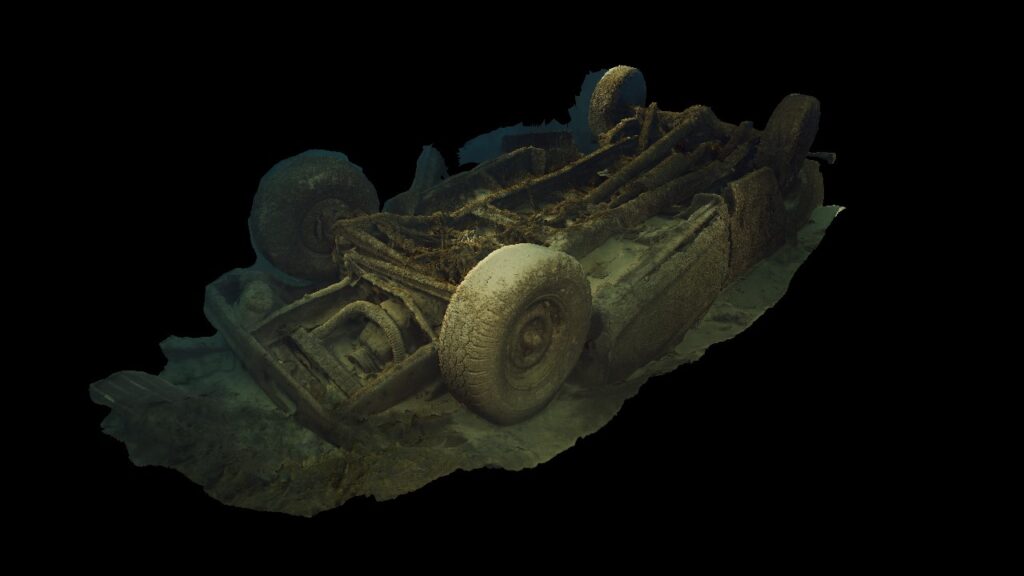
It’s child’s play
“You can’t underestimate the amount of effort that has gone into making the Discovery camera as simple to use as possible. We considered typical survey operations, and wanted to ensure that operators could maintain their general piloting missions without changing tasks or adding additional steps, but also wanted to ensure that the mission would gain a large advantage with the actionable datasets generated in real-time. I am happy to say that we have managed to do that. Discovery is a technical marvel, improving user experience and delivering outputs that are immediately accessible to any user.”
The technical innovations required to make this vision system work are numerous:
- Global shutter: Discovery uses a global shutter, which means that all pixels in the image are captured at the same time. This is important for maritime autonomy applications because it eliminates motion blur and distortion.
- High dynamic range: Discovery has a high dynamic range, which means that it can resolve features in the images with greater detail, whether the target is in very bright or very dark environments. This feature improves identification capabilities.
- 130° by 130° Dome: Discovery has a 130° by 130° Dome that provides very crisp imagery and colours with complete wide-area coverage delivering better situational awareness when performing piloting task or autonomous obstacle avoidance operations.
- High-powered lighting package: Discovery comes with a high-powered lighting package that includes two Nova Minis at 75,000 lumen each allowing the camera to operate in low-light conditions.
Why invest on your camera system?
“The camera is the most important sensor on an ROV. It is what allows you to see underwater without deploying a person. So why would you compromise and only rely on a low-latency camera with limited optimization for subsea environments? If you build the ROV to provide “eyes” in subsea environment for humans ashore, why would you compromise on the camera?,” Luke asks. “In a sense, customers should consider the camera they need to perform their operation before the platform, it is the sensors that enable humans to interpret the subsea domain, the ROV is simply the vessel to transport them.”
If you would like to find out more about Discovery or Voyis other optical systems, please contact us.
The ViperFish is an all-in-one compact remotely operated towed vehicle (ROTV) ideally suited for expeditionary mine countermeasures (MCM) and explosive ordnance disposal (EOD) surveys. Martin Kristensen, VP of Hardware Development at our technology partner EIVA, explains all in this edition of The Watch.
“The ViperFish is a new surveying platform that we developed to address the growing demand for unexploded ordnance (UXO) surveying in the offshore wind industry,” said Kristensen. “It is a versatile and easy-to-use system that can be deployed from a vessel of opportunity. Expeditionary MCM survey requirements are very similar so navies can benefit from all our commercial experience to make their surveys far more efficient.”
Experience where it counts
“We wanted to incorporate all the lessons we learned from building and operating the ScanFish ROTV, the industry’s leading UXO survey platform, into the design of the ViperFish, creating a UXO surveying platform optimised to meet the demands of our customers. These include increasingly efficient surveys and where possible these needed to be automated. To support an increasing volume of surveys, new ROTVs needed to be compact, easy to launch and recover from a variety of vessels, including uncrewed surface vessels (USVs), and equipped with class-leading payloads and navigation sensors.
The system is built using the same building blocks as the ScanFish, enabling us to leverage all that experience. The first obvious difference between the ViperFish and the ScanFish is the shape. The ViperFish is cylindrical with actuated fins, while the ScanFish is shaped like an airfoil. The new system is as manoeuvrable, but the difference in shape offers a number of benefits:
- A lower drag coefficient: this means that it requires less power to tow. This is important for autonomous UXO surveys, as it allows the ViperFish to be deployed from smaller vessels or even from shore.
- More stability in rough seas: the pitch and roll are controlled by the actuators maintaining a more stable platform enabling you to work closer to the seafloor and maintain a stable platform at the sweet spot for the sensors providing improved data and therefore better decision making.
- A narrower profile enabling operations from smaller vessels: making it easier to transport and deploy. This is a major advantage for expeditionary surveys, as it allows the ViperFish to be deployed and recovered more quickly and easily.
It’s not just the platform. It’s the whole system. We conducted significant research to minimise the cable drag. By doing this, we can operate with smaller winches and deploy from a smaller surface area. We offer two shipment options: a self-contained cradle-box that can be shipped everywhere, or a container ready to integrate into a vessel.
It’s taken some time, but one of the most memorable things about the ViperFish is the first time we put it in the water,” said Kristensen. “On our first prototype test, we were out sailing 3 days and we had 100% uptime on the system. It was really a relief and a joy to see that all of our hard work had paid off.”
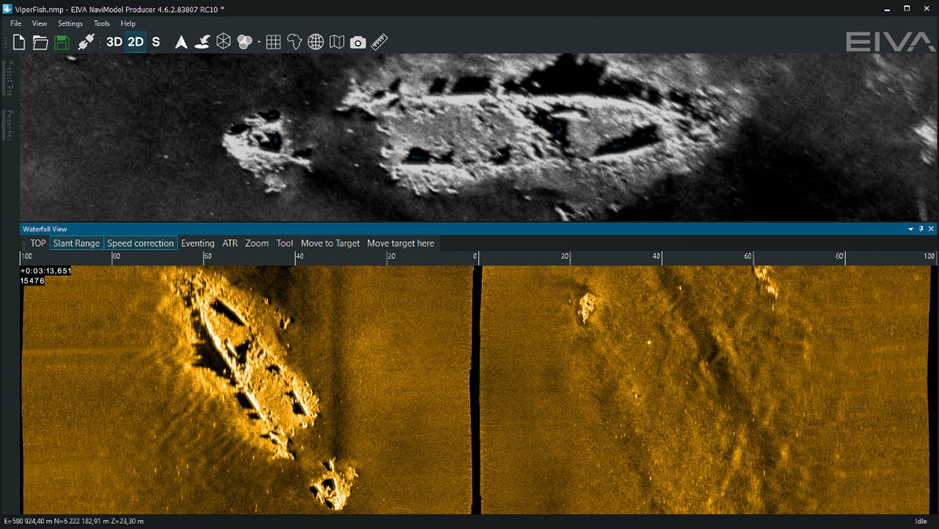
All the payloads
The ViperFish is equipped with all the sensors typically required on an ROTV, including:
- Solstice multi-aperture sonar: Used to create a two-dimensional image of the seabed. This image can be used to detect mine-like objects. The ViperFish uses the Solstice from our technology partner Wavefront Systems. This sonar is known for its high resolution and low power consumption.
- R2Sonic 2020 multibeam echosounder: It creates a three-dimensional image of the seabed. This is used to fill the gap ensuring 100 % coverage from a single survey line.
- OFG Hypermag: This magnetometer detects magnetic anomalies in the water or on the seabed generated by mines or other metallic objects while filtering out magnetic anomalies generated by the ViperFish itself.
- SPRINT-Nav Mini hybrid DVL-INS: Used to track orientation, position and speed; this system is from our technology partner Sonardyne. This information is used to create accurate maps of the survey area.
- Mini-Ranger 2 USBL positioning: The ultra-short baseline positioning system is used to track the ViperFish’s position in absolute coordinates. The Mini-Ranger 2 is a class-leading positioning system from our technology partner Sonardyne.
- Valeport sound velocity sensor: the sensor is used to optimise the sonar survey in real time, which is especially important when operating close inshore and within estuaries where sonar conditions can change rapidly.
The integration of these sensors into the ViperFish ROTV makes it a versatile and efficient UXO surveying platform. The ViperFish can be used to conduct surveys in a variety of conditions, and it can detect a wide range of objects.
Low-logistics, simple to operate, quick to train
“The ViperFish is operated by a crew of two people. The survey plans are prepared beforehand using NaviSuite Kuda software from EIVA. When launching the system, one person is responsible for supervising the ViperFish, while the other person controls the crane. At a speed through water of 2 to 10 knots, once in the water the ViperFish automatic controls take over, quickly swimming to the appropriate height from the seafloor within less than a minute. When the system is deployed one person is responsible for monitoring the automated mission while operating the ViperFish’s sensors and collecting data. If the ViperFish detects a possible UXO, the crew can mark the location on a map. The crew can then return to the location at a later time to investigate further. The system follows the seabed at a fixed height and can cope with slopes of up to 45 degrees. Plus it can replan its mission if obstacles are detected and avoid them in a safe manner while still obtaining high-quality data. When the mission is completed, the ViperFish is recovered by the two-person crew. We are also in discussions with USV manufacturers to make the launch and recovery totally automated.”
“The system is relatively easy to operate, even for people who are not trained hydrographers. The whole training process can be completed in a couple of weeks, it is mostly focused on learning how to set up the system and how to operate the sensors. If the crew is already experienced with using autonomous underwater vehicle (AUV) systems or the ScanFish, the training process will be a couple of days at most. Since the user interface of NaviSuite Kuda, EIVA’s survey software, is used widely in the commercial sector, there is already a large pool of contractors and trainers ready to support operations. In addition, sailors will be gaining valuable skills to support their transition to the commercial sector.”
Actionable data
“Ultimately, it’s about delivering our customers the best data, and you’ll be surprised how challenging it is to get these many payloads into the right form factor. But it has been worth it. We offer an incredible amount of area coverage rate of actual actionable data using class leading sensors.”
Please contact us to find out more.
In the second of the DiveTrack series of blogs, retired Royal Navy Cdr Justin Hains MBE illustrates how divers can enhance their current operations through the intelligent use of underwater communications and tracking. Read on to find out how diving supervisors can be kept in the know with our technology partner Sonardyne‘s latest product.
If you haven’t yet read the first blog in the series then follow this link.
Enhanced Situational Awareness
DiveTrack from our technology partner Sonardyne shows the supervisor where the divers are by range, bearing and depth. This positional information can be georeferenced by GPS and displayed on a chart layer. The supervisor can also be provided near real-time cylinder pressures, equipment alarms or alerts. Future features will include gas analysis of the breathing loop (PPO2 or CO2 content for example) and biometric data. Better information supports better decision making.
The diver’s positions are constantly updated. This has two operational advantages: first, the divers know where they are with a high degree of accuracy without the need to surface – they remain covert. Second, the divers arrive on target having spent the minimum time in the water, in better shape for the assault or recce. Covert beach surveys can be completed accurately without the need for a floating GPS antenna attached to the diver or constantly resurfacing to ensure the snag-line survey is correctly positioned – no easy task in current and swell.
The supervisor can also see when a diver is using gas at an unexpectedly high rate that endangers the mission. They can see if a diver is ascending or worse descending unexpectedly: a significant danger on enriched oxygen equipment. Because the supervisor can implement changes to the plan based on enhanced situational awareness the mission is more likely to succeed. If the team can react to unforeseen events efficiently, rather than working through pre-planned responses without any more detail, the team is one step closer to the ‘hyper-enabled operators’ envisaged by United States Special Operations Command.
The result of improved situational awareness is more efficient insertion and extraction and greater confidence in the accuracy of any data collected.
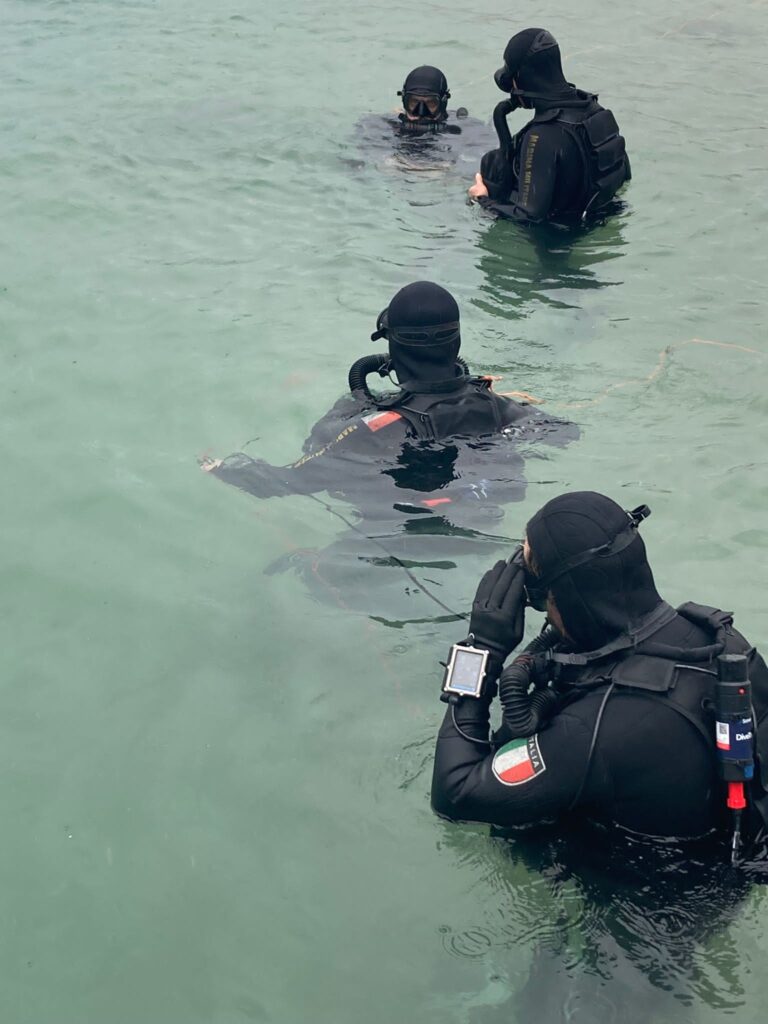
Tactical Flexibility
“No plan stands first contact with the enemy” – or, in my experience, salt water. A covert dive to an offshore installation or a long-range insertion for beach reconnaissance both suffer from the same problem: there is no way of recalling the divers covertly without increased risk of detection on the surface. DiveTrack provides reliable through water communication via a selection of pre-formatted messages between supervisor and divers. In extremis, this could be an “abort mission” sent to all divers followed by a “return home” command which triggers a display of bearing and range information on the Shearwater Petrel dive computers and optional head up displays that will home them back to the dive boat, even as it moves.
But aborting the dive is the last resort. Far better is managing the mission dynamically. If the boat must move due to an enemy patrol, the beach recce team can be informed instantly. A “go to [new] waypoint” command can be sent by the supervisor at any time.
The system combines the accuracy of GPS with proven underwater acoustic ranging technology. But DiveTrack can still function in a GPS-denied battlespace. While the errors in navigation will increase over time, the relative positions of the dive boat and divers will remain accurate, and communications are unaffected. The mission can still proceed, reverting partially to previously used methods of visual sightings, but the benefits highlighted: enhanced situational awareness and tactical flexibility remain.
Want to know more?
In my next blog I will focus on the safety aspects of DiveTrack and how it has been built to be future proof. Keep an eye out for it.
In this blog retired Royal Navy Cdr Justin Hains MBE provides a personal view on the challenges he faced as a serving officer in charge of diving. These are common challenges faced by many dive supervisors and until recently there was not much that could be done to mitigate for them. Read on to discover how our technology partner Sonardyne‘s new DiveTrack product line will make diving more effective and safer.
It wasn’t that long ago
I remember sitting in a dive boat at night, wondering if my unmarked divers would arrive safely at the pick-up point off Portland. The issue was lack of through water communications, so I was constantly running the “what ifs”. What if the divers didn’t surface in the place and at the time planned? If I wanted to recall them: how would I know my message would reach them? My rescue diver had no realistic chance of finding a casualty underwater. Without an external clue the odds were worse than 400:1.
I needed better situational awareness delivered by three broad requirements: me knowing the location of the divers; me communicating with the divers and the divers being able to communicate with me. Finally, underpinning all of this, in a worst-case scenario, I also wanted to send the rescue diver directly to a casualty without potentially fruitless and time-consuming underwater searches.
The technology that was missing all those years ago was reliable diver tracking and through water communications. Early solutions struggled with background noise and distortion, were limited to voice communications, and while solving the communications problem over reasonable distances did not provide accurate positional information to both diver and rescue boat.
Our technology partner Sonardyne’s DiveTrack provides a reliable answer to these core requirements with headroom for additional data exchange requirements in future. It is compact, neutrally buoyant in sea water, easy to use and reliable. It has been integrated with rebreathers and open circuit equipment. This is proven technology with application across all military diving from the experts in underwater acoustic tracking and communications.
The system has a low probability of intercept, and its encryption keeps transmissions secure. While there is a small chance of detection by a smaller group of adversaries the tactical advantage of having clear communications outweighs the small risk of real-time detection and exploitation.
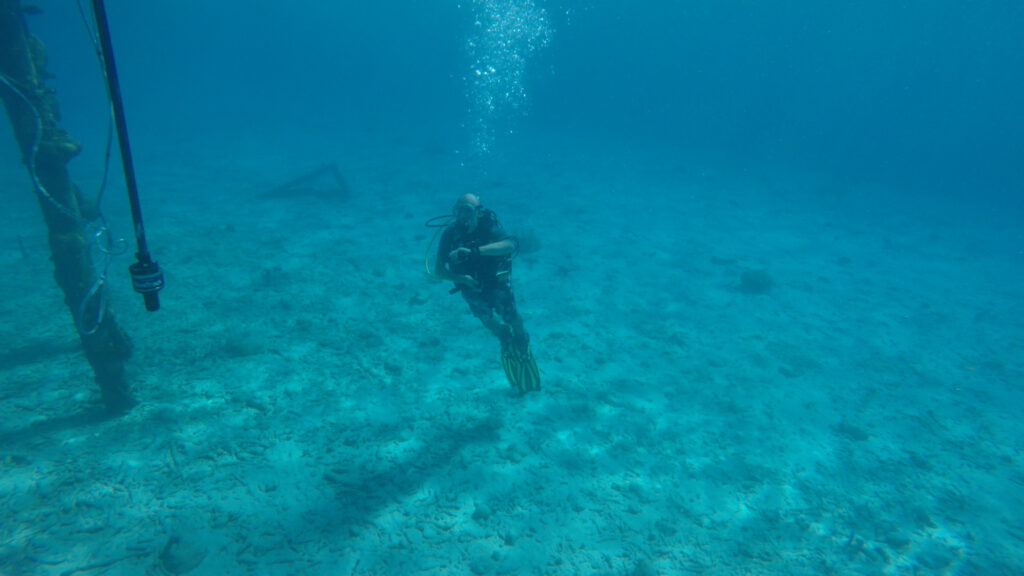
Want to know more?
Follow this link to read my next blog on this subject, where I will discuss how DiveTrack provides safety, operational advantage and a greater probability of mission success. The combination of improved situational awareness, even in a GPS denied environment, and the reliability of communications and positioning provide an unprecedented level of tactical flexibility in a range of operational scenarios. The risk of detection and exploitation of the encrypted signals is easily outweighed by the operational advantages of the system. Finally, should the worse happen and a diver requires assistance: the rescue diver or other divers nearby can home onto the position. The rescue diver will find the casualty.
Forcys brings together leading technologies, offering a comprehensive naval and subsea capability to the Australian defence market
Evolving threats, unlawful maritime claims, military coercion, all these factors are destabilising the Asia Pacific region and causing many lawful states to reconsider their defence strategies. Australia’s 2020 Defence Strategic Update and the anticipated March 2023 release of Australia’s Defence Strategic Review has brought these issues into sharp focus while demanding growing self-reliance for delivering deterrent effects. Today’s launch of Forcys Australia and the appointment of Sean Leydon as Regional Manager for Asia Pacific, is in direct support to this strategic need.
Backed by over fifty years of experience, Forcys offers the global maritime defence sector, remote, autonomous and networked control capabilities that deliver integrated situational awareness to customers in the underwater domain.
Covering a range of maritime operations including asset protection, littoral strike, mine warfare, submarine rescue, and submarine and anti-submarine warfare, Forcys seeks to transform the underwater domain by enabling increasingly distributed and automated operations. This is made possible by integrating and bringing to market world-changing solutions from leading technology partners Chelsea Technologies, EIVA, Sonardyne, Voyis and Wavefront Systems.
Commenting on the Australia launch, Ioseba Tena, Commercial Director of Forcys, said: ‘I am excited, Australia is taking bold decisions in the underwater domain. There’s been a realisation that uncrewed systems take a lot of the risk out of the conflict, they afford higher levels of attrition and deliver higher coverage rates. The sense of urgency is palpable and there is an appetite to work with industry experts to support the transition. We are keen to support a sovereign, sustainable capability.’
Sean Leydon, Regional Manager for Forcys’ Asia Pacific region, explains: ‘Our technology partners already engage with the Australian Government and industry, so our initial focus will be on improving those interactions by providing an in-country presence. However, our ambition doesn’t stop there, we are actively recruiting engineers to help support our existing customers and in time to develop sovereign capability. I’m looking forward to help make a difference.’ Forcys is exhibiting at the NAVDEX exhibition in the United Arab Emirates between 20th and 24th February 2023 at stand A-029. If you’d like to arrange a meeting with the Forcys team, please get in touch.
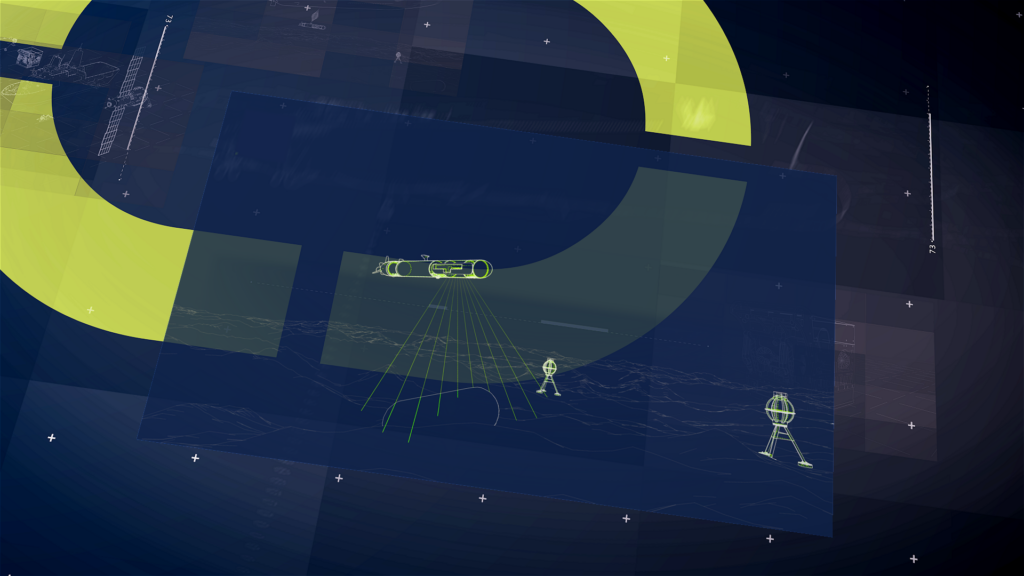
In Brief
In this project, the University of Tasmania evaluated the capabilities of optical-based sensors when using an AUV (Autonomous Underwater Vehicle) to dynamically survey large areas and identify specific objects of interest within environments. Based on the performance of the systems and the overall process, recommendations will be made to Defence Science and Technology for using this technique when trying to identify a mine-like object (MLO) underwater.
The challenge
Wide-area sensors, like sonar, can be used for mine detection, but don’t always offer enough details for the identification stage. Meaning that historically, underwater mine identification has been done by deploying divers or remotely operated vehicles.
The solution
Our technology partner, Voyis, develop high-resolution optical systems capable of rendering laser point cloud data and capturing 4k stills images. These provide a complete visual understanding of mine-like objects (MLOs), improving mission lethality, and reducing risk by limiting diver deployments in the minefield.
The Insight Pro laser scanner, the stills camera Observer Pro, and the Nova LED panel were bottom mounted in the University of Tasmania’s ISE Explorer AUV . All data was collected and saved to the onboard storage of the sensors; image data was processed in real-time. The AUV travelled at an altitude between 1.5-15m while the laser and stills system collected data, operating harmoniously to ensure laser and stills data sets of the same targets were collected.
The result
Voyis sensors were easily integrated into the Explorer AUV and generated crisp 4K images. The data collected provided enough details for the easy identification of objects, allowing users to distinguish between mines and similar objects found underwater.
The crisp stills images are enhanced in real time, for complete situational awareness in warfare operations. Images are corrected to remove all aspects of the water medium – colour, lighting, and distortions. The results provide a significant improvement in relation to conventional optical systems typically mounted on AUVs. From now AUVs can potentially be used to build wide area high-resolution maps of the subsea environment.
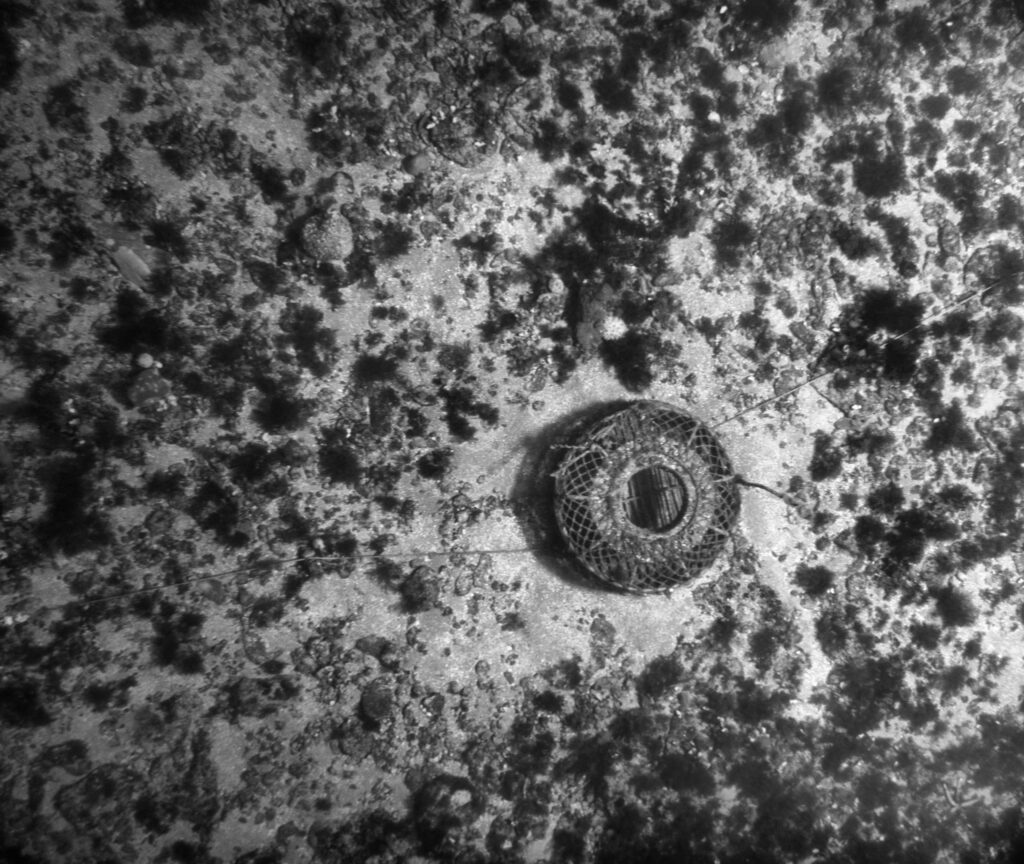
Contact us if you would like to reach out to our experts.
If you have to operate side-scan sonars and synthetic aperture sonars (SAS) in very shallow waters (VSW) or shallow waters (SW), the acoustic environment is particularly hostile. Higher order multi-path reverberation, unstable velocity of sound profiles, often unknown, as well as significant bathymetry, baseline decorrelation effects and generally far fewer stable platforms, all add up. The result is far less reliable end sonar products with greater impact to longer range systems. This is particularly acute in tidal and riverine environments. What to do?
Go back to the drawing board
When Solstice was developed in 2010, our technology partner Wavefront Systems decided it was time for a step up in the performance of traditional side-scan sonars. The aim was to deliver a high-frequency, high-resolution, and long-range sonar that would provide a marked improvement in the probability of detection of mine-like objects while minimising the probability of false alarms.
Solstice was designed to do just that. Step one was to design a multi-aperture array which would improve the signal-to-noise ratio extending the range over other sonars operating at the same frequency. However, longer ranges in shallow waters are susceptible to multi-path reverberation. Dr Rob Crook, Research Director at Wavefront Systems explains how Solstice overcomes this problem: “The dominant source of noise for all side-scan sonars operating in shallow waters is ‘multi-path’ reverberation. The nature of this noise means many acoustic pathways scattering from spatially unrelated regions of the underwater scene may none-the-less return to the sensor with identical flight-times. The inability of any ‘2D’ (range, bearing) sensor to discriminate between these contemporaneous pathways leads to an inevitable loss of contrast. Multi-path Suppression Array Technology (MSAT) is a physical array-based technology that offers the swathe coverage one would traditionally have associated with wide elevation beam-widths, with the shadow contrast associated with very narrow beams. MSAT allows high shadow contrast right out to the maximum range of the sensor whilst maintaining high quality imagery close to nadir.” Why is contrast important? It helps to differentiate targets from the surroundings.
In addition, Solstice implements dynamic focusing ensuring that the image will maintain the highest possible resolution at the position in space relative to the sensor, meaning that the resolution will improve as the range to the target decreases. While at longer ranges the interpolated real-time imagery drastically aids human visual perception.
What does it all mean?
The design choices lead to significant advantages for Solstice users. These are some examples of where Solstice excels.
- Simpler to operate: Solstice is simple, the area coverage rate increases with speed while the range remains constant. This makes mission planning easy. You can understand and use the constant range to plot a survey route and you can observe the area that is under consideration. The survey outcome becomes more predictable and simpler to manage.
- More robust: Systems like SAS are known to be very sensitive when mounted on an unstable platform or operating over complex seafloor environments. Any dynamic changes may impact the quality of the SAS data; mud sediments can result in complete loss of micro-navigation data, and in the worst outcome the SAS needs to revert to normal side-scan mode. SAS typically operates at a lower frequencies hence this corrupted SAS side-scan data is not suitable for most operations. Solstice MAS does not share this problem.
- High currents: In MAS the range is limited as a function of the so-called ‘crabbing angle’ but the image quality is preserved along the whole swath.
- Shallow waters: Operations in confined spaces and shallow waters (20m to 30 m depth) are difficult for SAS systems or lower frequency side-scans. These systems can become range limited as the multipath effects from surface returns has an impact on the SNR performance and this is common for all side-scan sonars. For some SAS systems, these effects can compromise as much as 50% of their swath but with Solstice MAS, the impact will typically be less than 10%.
 |  |  |  |
| 22 m | 47 m | 72 m | 92 m |
Please contact us to find out more.
In brief
Just because your expeditionary forces operate small Autonomous underwater vehicle (AUV) systems, it doesn’t mean they should not be ambitious as to which payloads to carry. When deploying from a Rhib or other confined spaces, then low-logistic one-person operated instruments are a necessity. This requirement has seen the proliferation of small AUVs. In January of 2022 a number of this units manufactured by OceanScan-MST were delivered to Denmark’s Frederikshavn naval base. Though the AUVs are small, their payload requirements weren’t.
The challenge
The customer wanted to equip these AUVs with the latest generation of 4K digital stills cameras and 3D lasers. Fitting the equipment to an AUV already packed with sonar payloads and other navigation instruments is challenging. Fortunately our technology partner Voyis and their next generation optical systems were at hand. They had to work closely with OceanScan-MST to understand the constrains and develop the right mechanical design to integrate the popular Recon LS System.
The solution
The solution was to develop an OEM version of the Recon LS where each of the components was delivered and carefully integrated to the AUV. The integration to the platform is of paramount importance as the product has been very carefully designed to optimally illuminate the scene.
The result
The Light Autonomous Underwater Vehicle (LAUV) supplied by OceanScan-MST were equipped with an identification capability enabling each of the AUVs to search for contacts with the combined sonar and laser pair and enabling re-acquisition with the same AUV. This means improved probability of detections, increased area-coverage-rates and mission tempo and imaging with an amazing fidelity to support other missions beyond mine countermeasures.
If you would like to know how Forcys and its technology partners can support your expeditionary needs please do not hesitate to get in touch.
